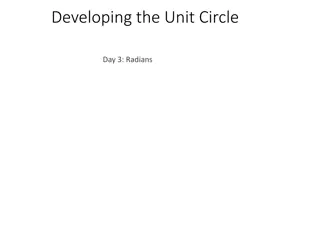
Research Methodology: Sampling and Data Collection in Psychology Studies
Learn about various sampling designs, such as probability and non-probability methods, in research methodology for psychology studies. Explore data collection methods like observation, interview, and questionnaires, along with the characteristics of a good sample for accurate representation. Understand the types of sampling techniques used in statistical analysis.
Download Presentation

Please find below an Image/Link to download the presentation.
The content on the website is provided AS IS for your information and personal use only. It may not be sold, licensed, or shared on other websites without obtaining consent from the author. If you encounter any issues during the download, it is possible that the publisher has removed the file from their server.
You are allowed to download the files provided on this website for personal or commercial use, subject to the condition that they are used lawfully. All files are the property of their respective owners.
The content on the website is provided AS IS for your information and personal use only. It may not be sold, licensed, or shared on other websites without obtaining consent from the author.
E N D
Presentation Transcript
DEPARTMENT OF PSYCHOLOGY, UCSSH, MLSU UNIT-3 RESEARCH METHODOLOGY SAMPLING AND DATA COLLECTION Sampling Design: Meaning, Probability, and Non Probability sampling methods, determination of sample size Data Collection methods: Observation- Naturalistic Observation, laboratory Observation, Participant observation, non participant observation, Structured Observation, Unstructured Observation Interview- Structured, Unstructured Questionnaire- close ended, open ended scales
SAMPLE A sample is defined as a smaller set of data that a researcher chooses or selects from a larger population by using a pre-defined selection method. These elements are known as sample points, sampling units, or observations.
CHARACTERISTICS OF A GOOD SAMPLE (1) Goal-oriented: A sample design should be goal oriented. It should be relate to the research objectives and fitted to the survey conditions. (2) Accurate representative of the universe: A sample should be an accurate representative of the universe from which it is taken. There are different methods for selecting a sample. It will be truly representative only when it represents all types of units or groups in the total population in fair proportions. In brief sample should be selected carefully as improper sampling is a source of error in the survey. (3) Proportional: A sample should be proportional. It should be large enough to represent the universe properly. The sample size should be sufficiently large to provide statistical stability or reliability. The sample size should give accuracy required for the purpose of particular study.
CHARACTERISTICS OF A GOOD SAMPLE (4) Random selection: A sample should be selected at random. This means that any item in the group has a full and equal chance of being selected and included in the sample. This makes the selected sample truly representative in character. (5) Economical: A sample should be economical. The objectives of the survey should be achieved with minimum cost and effort. (6) Practical: A sample design should be practical. The sample design should be simple i.e. it should be capable of being understood and followed in the fieldwork. (7) Actual information provider: A sample should be designed so as to provide actual information required for the study and also provide an adequate basis for the measurement of its own reliability.
SAMPLING Sampling is a process used in statistical analysis in which a predetermined number of observations are taken from a larger population.
TYPES OF SAMPLING Broadly the sampling techniques can be classified into two categories- Random/ Probability sampling Non-random/ Non- Probability sampling 1. 2.
RANDOM / PROBABILITY SAMPLING Probability sampling is a method of deriving a sample where the objects are selected from a population-based on the theory of probability. This method population, and everyone has an equal chance of being selected. Hence, there is no bias whatsoever in this type of sample. Each person in the population can subsequently be a part of the research. includes everyone in the
TYPES OF RANDOM / PROBABILITY SAMPLING Simple Random Sampling/ Complete random sampling The most straightforward way of selecting a sample is simple random sampling. In this method, each member has an equal chance of being a part of the study. The objects in this sample population are chosen purely on a random basis, and each member has the same probability of being selected. 1.
TYPES OF RANDOM / PROBABILITY SAMPLING 2. Cluster sampling Cluster sampling is a type of sampling method where the respondent population is divided into equal clusters. Clusters are identified and included in a sample based on defining demographic parameters such as age, location, sex, etc.
TYPES OF RANDOM / PROBABILITY SAMPLING 3. Systematic sampling Systematic sampling is a sampling method where the researcher chooses respondents at equal intervals from a population. The approach to select the sample is to pick a starting point and then pick respondents at a pre-defined sample interval.
TYPES OF RANDOM / PROBABILITY SAMPLING 4. Stratified random sampling/ purposive random sampling: Stratified random sampling is a method of dividing the respondent population into distinctive but pre-defined parameters in the research design phase. In this method, the respondents don t overlap but collectively represent the whole population. For example, a researcher looking to analyze people from different socioeconomic backgrounds can distinguish respondents into their annual salaries. This forms smaller groups of people or samples, and then some objects from these samples can be used for the research study.
NON-RANDOM / NON-PROBABILITY SAMPLING The non-probability sampling method uses the researcher s discretion to select a sample. This type of sample is derived mostly from the researcher s or statistician s ability to get to this sample. This type of sampling is used for preliminary research where the primary objective is to derive a hypothesis about the topic in research. Here each member does not have an equal chance of being a part of the sample population.
DETERMINATION OF SAMPLE SIZE Calculating sample size To calculate the sample size, you need the following parameters. Z-score: The Z-score value can be found, here. Standard deviation Margin of error Confidence level To calculate use the sample size, use this formula: Sample Size = (Z-score)2 * StdDev*(1-StdDev) / (margin of error)2 Consider the confidence level of 90%, standard deviation of .6 and margin of error, +/-4% ((1.64)2 x .6(.6)) / (.04)2 ( 2.68x .0.36) / .0016 .9648 / .0016 603 603 respondents are needed and that becomes your sample size.
DETERMINATION OF SAMPLE SIZE Sampling advantages As shown above, there are many advantages to sampling. Some of the most significant advantages are: Reduced cost & time: Since using a sample reduces the number of people that have to be reached out to, it reduces cost and time. Imagine the time saved between researching with a population of millions vs. conducting a research study using a sample. Reduced resource deployment: It is obvious that if the number of people involved in a research study is much lower due to the sample, the resources required are also much less. The workforce needed to research the sample is much less than the workforce needed to study the whole population. Accuracy of data: Since the sample is indicative of the population, the data collected is accurate. Also, since the respondent is willing to participate, the survey dropout rate is much lower, which increases the validity and accuracy of the data. Intensive & exhaustive data: Since there are lesser respondents, the data collected from a sample is intense and thorough. More time and effort is given to each respondent rather than having to collect data from a lot of people. Apply properties to a larger population: Since the sample is indicative of the broader population, it is safe to say that the data collected and analyzed from the sample can be applied to the larger population, and it would hold true.






















